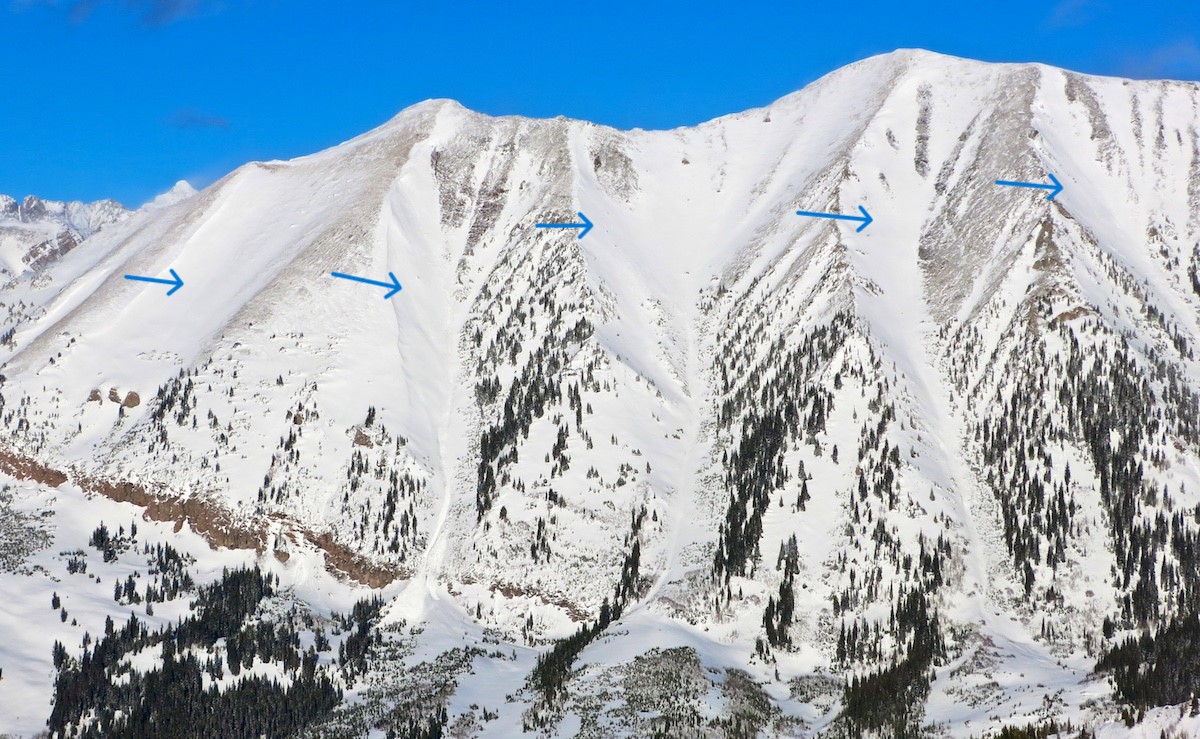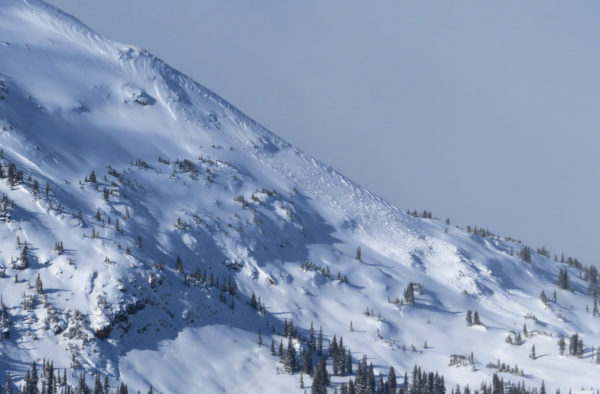Deposition of wind transported snow as it blows across terrain.
Drifting snow gets deposited in locations where wind eddies or loses speed as it blows across terrain: depressions, behind ribs, near convexities, and in gullies. It is common to find wind deposited snow on one side of a gulley, and wind erosion on the other. This pattern of cross-slope wind loading is called cross-loading, and it forms wind slabs on terrain features that are well below ridgelines or summits.
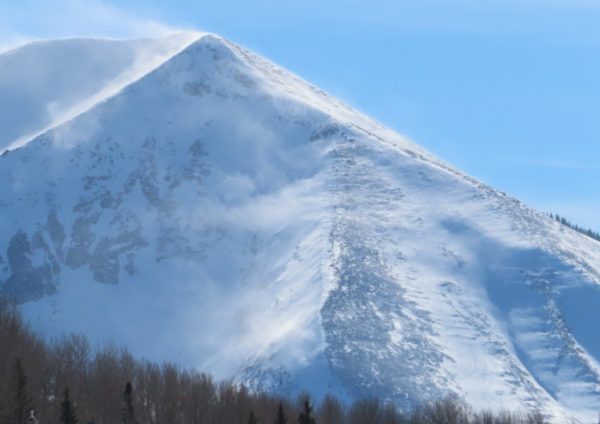
Active cross-loading caused by winds wrapping around the side of a mountain. Credit: Crested Butte Avalanche Center
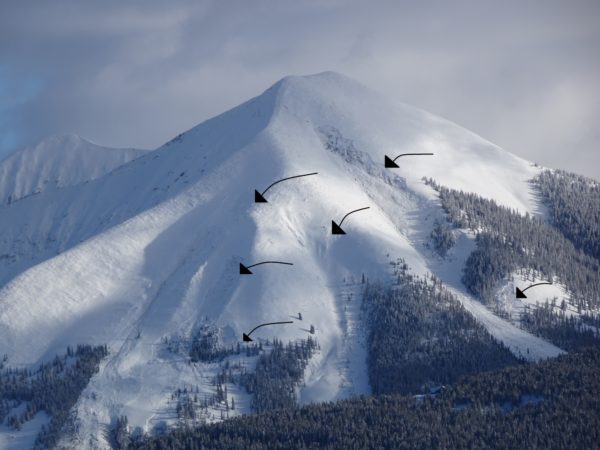
Several avalanches that released on the cross-loaded side of a gulley. Arrows show the direction of wind loading. Credit: Crested Butte Avalanche Center
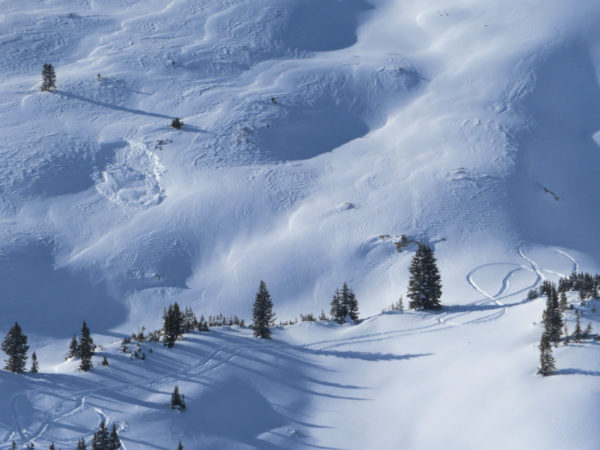
This avalanche released from a small cross-loaded rollover from winds blowing right to left. Credit: Crested Butte Avalanche Center
